Business Simulation Platform
Unforgettable Business Learning
Create a rich, real-world experience that helps prepare your learners for the complexities of today's competitive and dynamic business landscape.
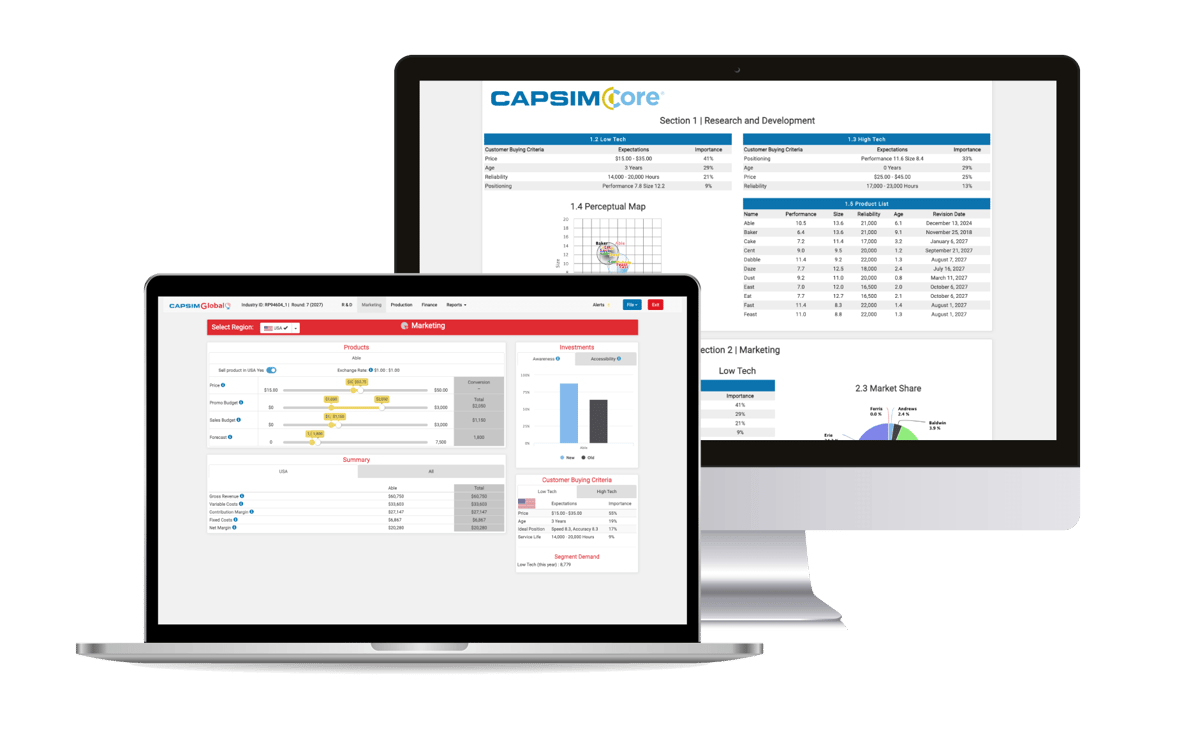





Break Down the Silos of Business Learning
Our flexible simulation platform provides an immersive and holistic environment where learners experience first-hand the deep and dynamic interconnectivity of making real-world business decisions.
Popular Features:
- Individual- and team-based capabilities
- Scalable from 1 to 1,000+ learners
- Domestic and global business environments
- Practice and competition modes
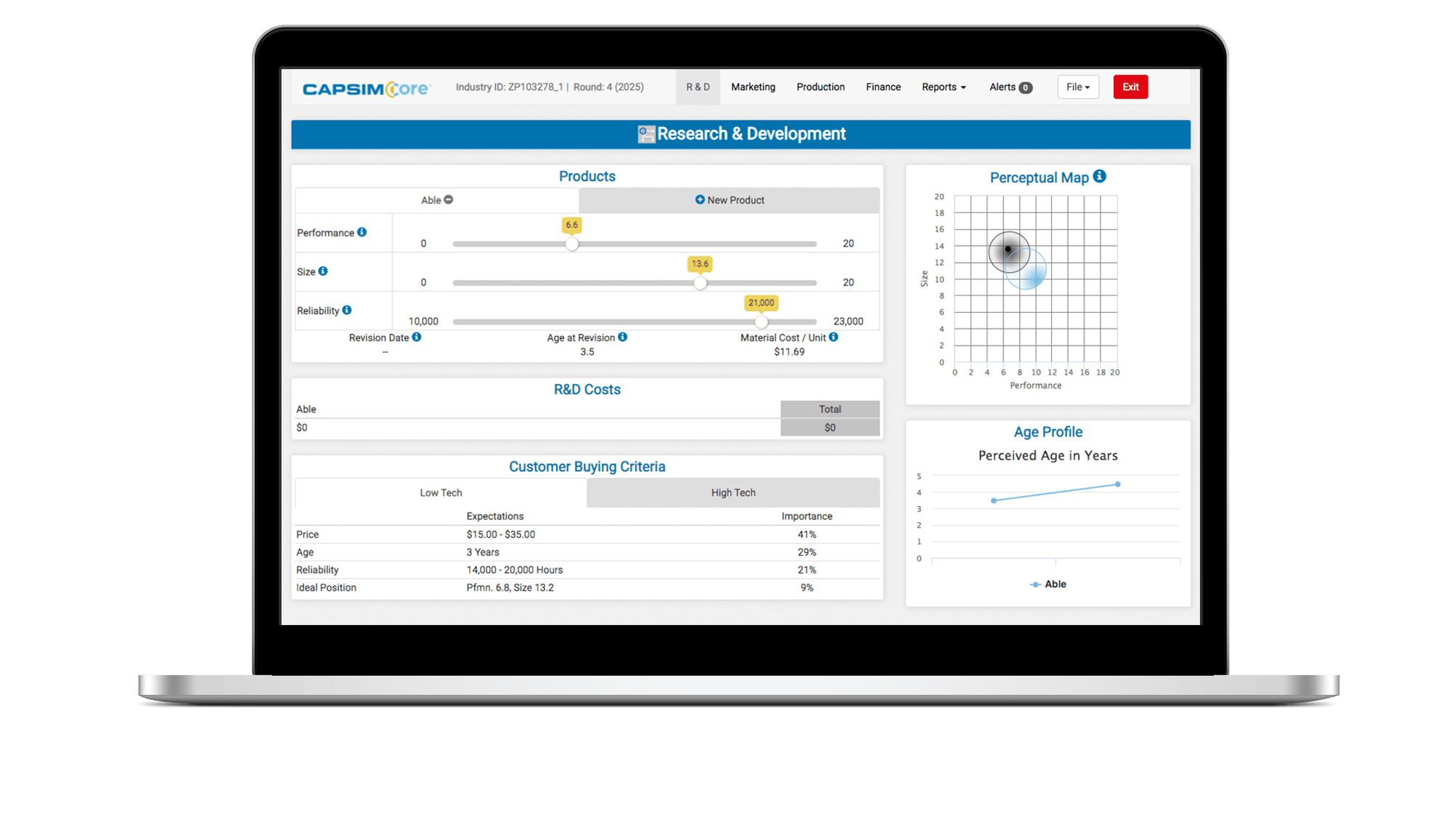
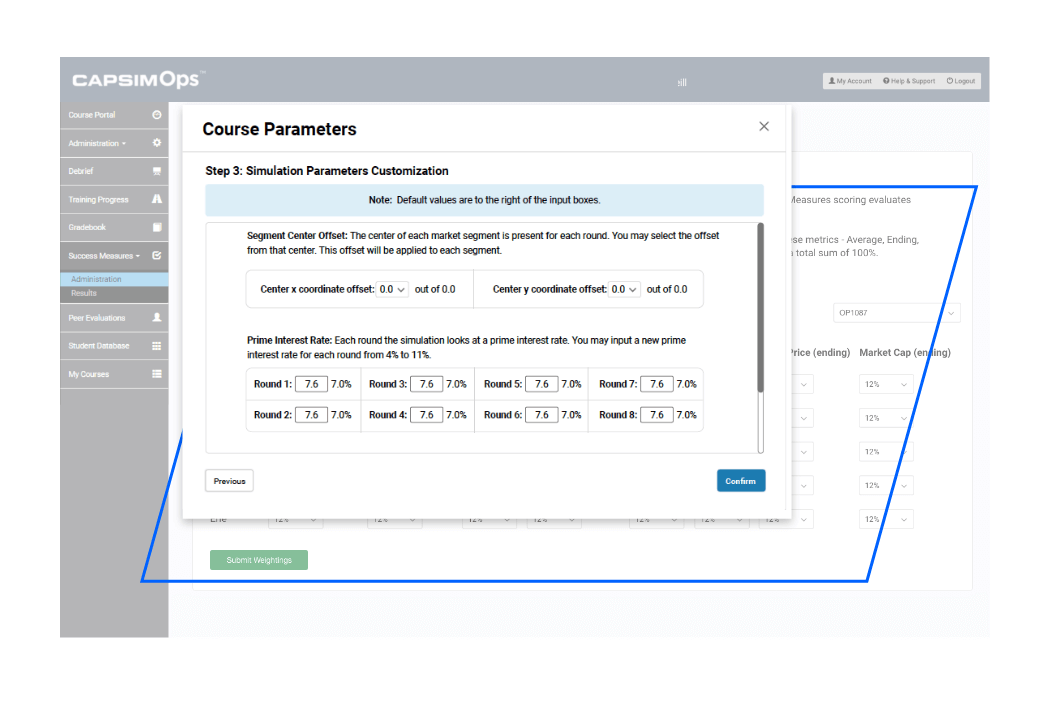
Tailor the Learning Experience to Your Unique Needs
No two courses, let alone instructors, are the same. Our configurable platform lets you easily tailor the learning experience to better align with your course objectives, logistical constraints, and teaching style.
Popular Features:
- Multiple scoring/grading options
- Adjustable market conditions
- Integrated case modules
- Configurable computer-run companies
NEW! Integrated Sustainability Module
Teach Your Students How to Balance Profitability With Sustainability
The integrated module is optional and included with the Capstone 2.0 business simulation.
Everything You Need to Streamline Course Management
Our business simulation platform is more than just a teaching tool—it's a complete solution for you to enhance your instruction and streamline your course management.
Popular Features:
- Individual and Team Assessments
- Automated debrief tool
- Custom report builder
- LMS integration
- Turnkey eText Bundles
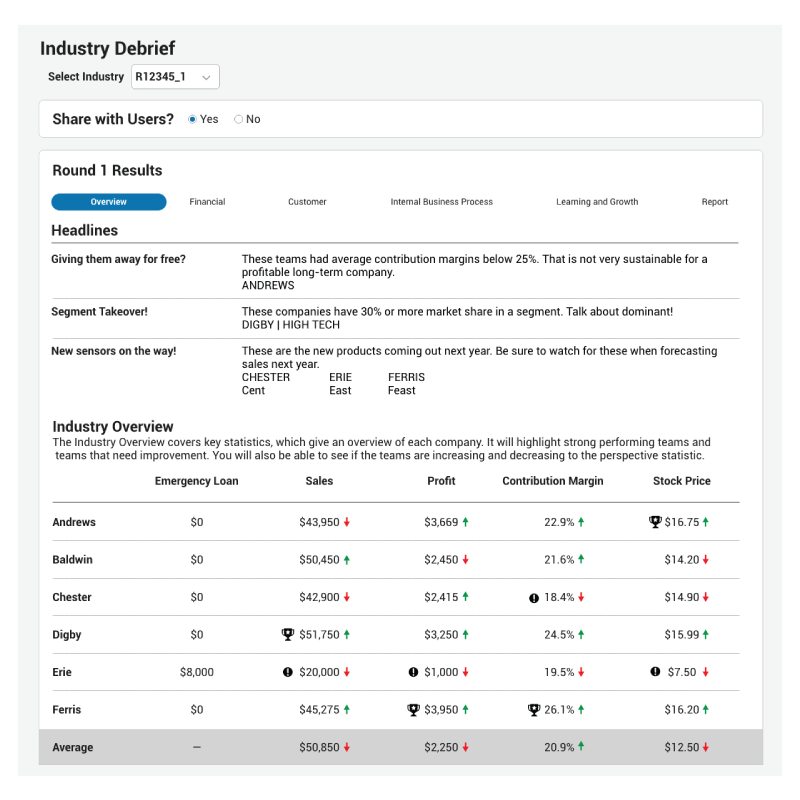
OUR SIMULATIONS
Discover the simulation that's right for you.
Our suite of business simulations create comprehensive learning environments across the entire business curriculum.

Complexity: Beginner
Market Segments: 2
Products: 1 – 4
International Market: No
Scoring Method: 5-star, Success Measures
Ideal Courses: Entry-level Business

Complexity: Intermediate
Market Segments: 2
Products: 1 – 4
International Market: Yes
Scoring Method: Balanced Scorecard
Ideal Courses: International Business

Complexity: Advanced
Market Segments: 5
Products: 5 – 8
International Market: No
Scoring Method: Balanced Scorecard
Ideal Courses: Capstone & Strategic Management

Complexity: Advanced
Market Segments: 2
Products: 1 – 4
International Market: No
Scoring Method: 5-star
Ideal Courses: Operations & Supply Chain Management
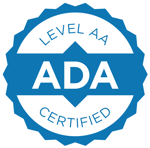
WCAG 2.0 AA Compliant
![GDPR_Badge[651]](https://www.capsim.com/hs-fs/hubfs/GDPR_Badge%5B651%5D.png?width=150&height=149&name=GDPR_Badge%5B651%5D.png)
GDPR Compliant

Unlimited Support & Training
Request a Demo
Ready to create an unforgettable business learning experience?
Request a demo and speak with a simulation expert today!